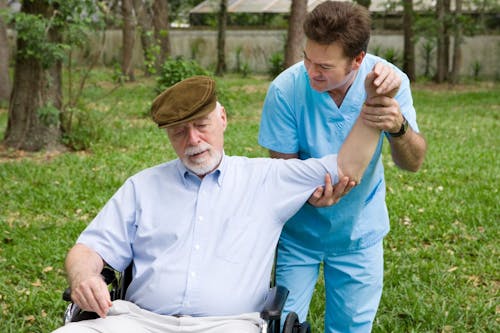Physical Therapy (PT) plays a crucial role in Neuromuscular Reeducation (NMR), a therapeutic approach focused on improving neuromuscular control and coordination.
Here are ways in which Physical Therapy can help with Neuromuscular Reeducation:
Assessment and Diagnosis:
- Physical Therapists conduct a thorough assessment to identify neuromuscular deficits and dysfunction.
- They may evaluate muscle strength, flexibility, balance, coordination, and movement patterns to understand the underlying issues.
Customized Exercise Programs:
- PTs design tailored exercise programs to address specific neuromuscular challenges.
- These exercises aim to improve muscle strength, stability, and coordination, promoting better control over movements.
Functional Movement Training:
- Focus on functional activities to enhance the ability to perform daily tasks and activities.
- Therapists may use task-specific exercises to retrain the neuromuscular system for activities like walking, reaching, or grasping.
Balance Training:
- Targeted exercises to improve balance and proprioception, reducing the risk of falls.
- Balance training helps individuals regain control over movements and react appropriately to changes in their environment.
Biofeedback:
- Utilization of biofeedback techniques to provide real-time information about muscle activity.
- This helps patients become more aware of their neuromuscular responses and learn to control and coordinate their movements effectively.
Coordination Exercises:
- Engage in exercises that challenge coordination and motor planning.
- Therapists may use activities like obstacle courses or specific drills to enhance the brain’s communication with muscles.
Postural Training:
- Emphasis on correcting and improving posture to reduce muscle imbalances and strain.
- PTs work on aligning the body properly to facilitate optimal neuromuscular function.
Patient Education:
- Education on proper body mechanics and techniques for performing daily activities.
- PTs empower individuals with knowledge about their condition and teach strategies to maintain gains achieved through therapy.
Progressive Rehabilitation:
- Gradual progression of exercises and activities as the patient improves.
- Therapists adjust the intensity and complexity of exercises based on the individual’s response and progress.
Functional Electrical Stimulation (FES):
- In some cases, therapists may incorporate FES to stimulate specific muscles and improve muscle recruitment patterns
Physical Therapy for Neuromuscular Reeducation is often a comprehensive and multidisciplinary approach, involving collaboration with other healthcare professionals to address the diverse needs of individuals with neurological conditions or injuries.

